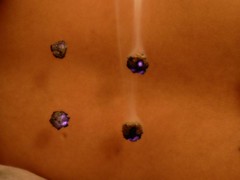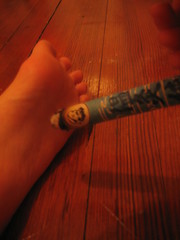 Photo by: maricarnjerry
Photo by: maricarnjerry
During my time at the weekend seminar with Junji Mizutani, I learned more efficient and painless ways to use moxibustion with our patients. And, even better, we had a good deal of practice time with the instructor, including individual time. As a student, it was also nice to be able to work with other more experienced practitioners.
We were taught several new methods of moxibustion, and I learned a lot of new ways to help patients with specific illnesses. For example, moxa can be used to treat diabetes, gynecological problems, sciatica, pain, neuralgia and so much more. As a practitioner, moxa is a great way to help nourish, heal, and warm the body. It can be used to supplement the healing process, or even instead of needles if patients aren't into needles.
Here are a few things I learned about the art of moxibustion this weekend:
- Moxa should be pleasant, as this warming technique is a powerful healing tool.
- Acute conditions may take 3-4 daily treatments to notice a difference, while chronic problems may take longer, depending on the injury or problem.
- The use of moxibustion can temporarily double the white blood cell count as well as the platelet count.
- Moxibustion can assist the function of the renal glands.
Junji Mizutani has written several articles for the North American Journal of Oriental Medicine(NAJOM). I recommend reading them, as his teachings are invaluable. I use moxa regularly at the OCOM clinic, but now I feel that I have a deeper appreciation and understanding of this powerful medicine.
This seminar was the first of many put on by the Traditional Japanese Medicine Seminars of Portland (PDXTJM), and I look forward to their future seminars.


 Miriam Lee (left) with her student, Susan Johnson, L.Ac.
Photo taken from: www.tungspoints.com/miriamlee
Miriam Lee (left) with her student, Susan Johnson, L.Ac.
Photo taken from: www.tungspoints.com/miriamlee